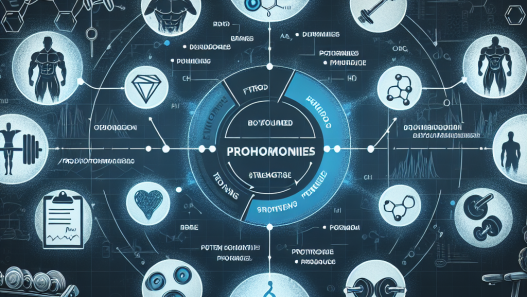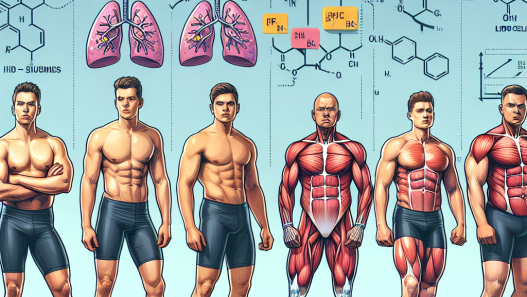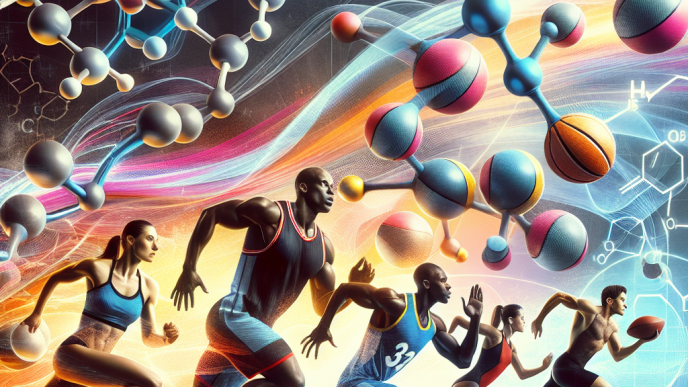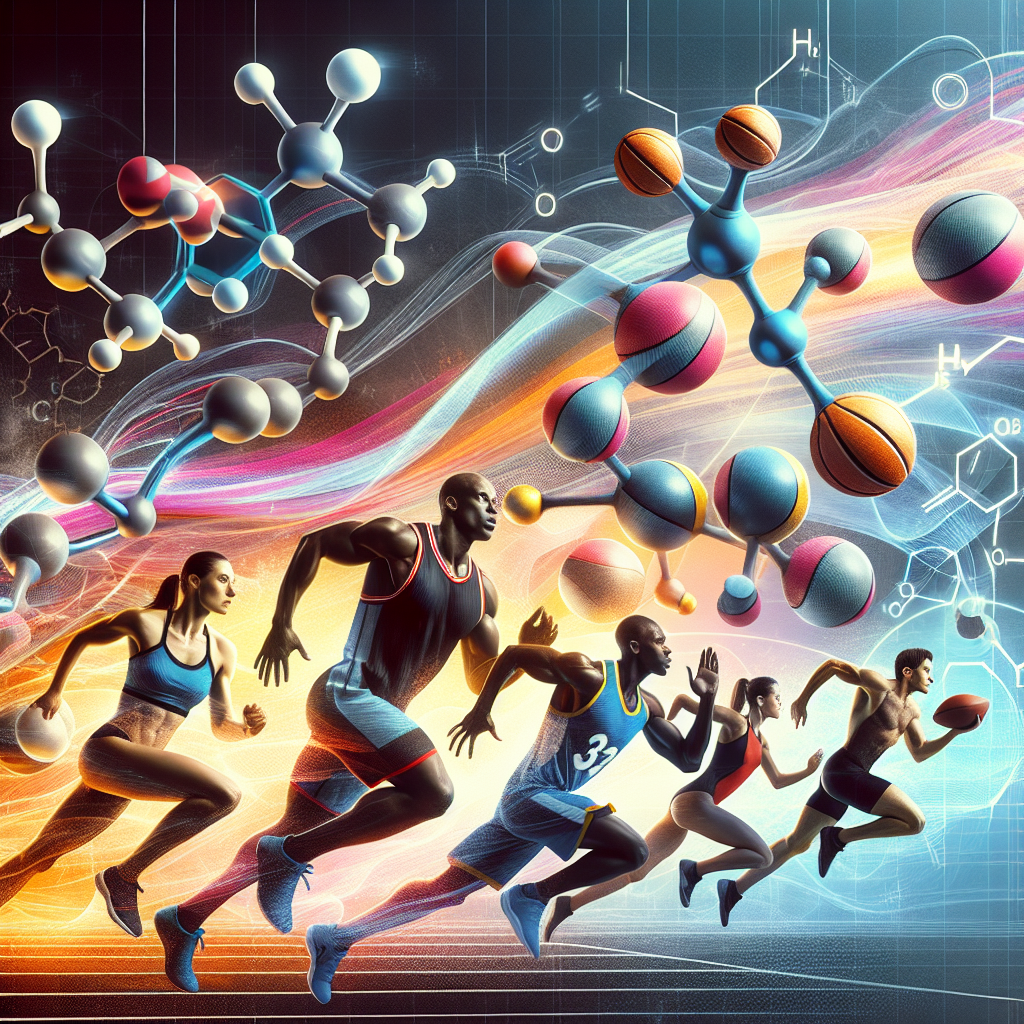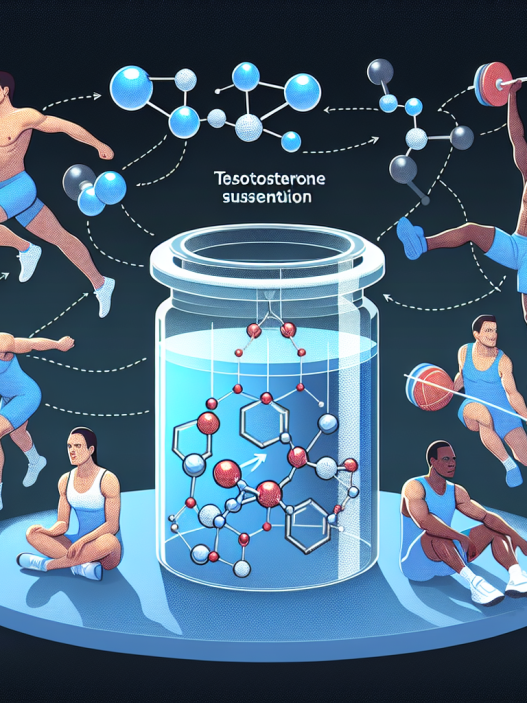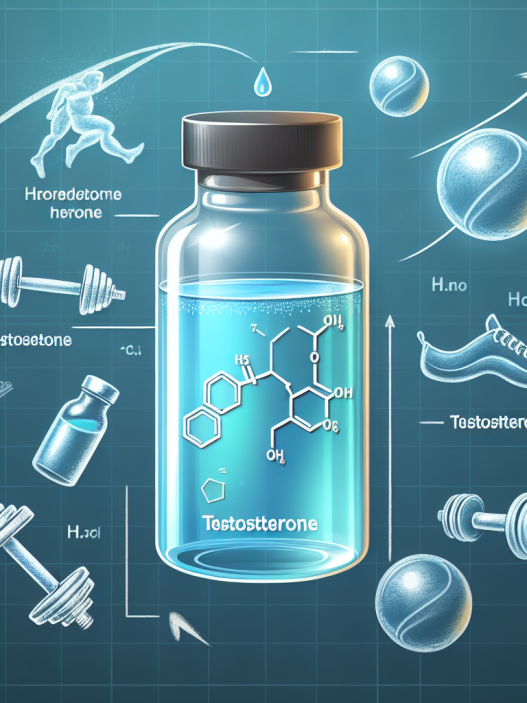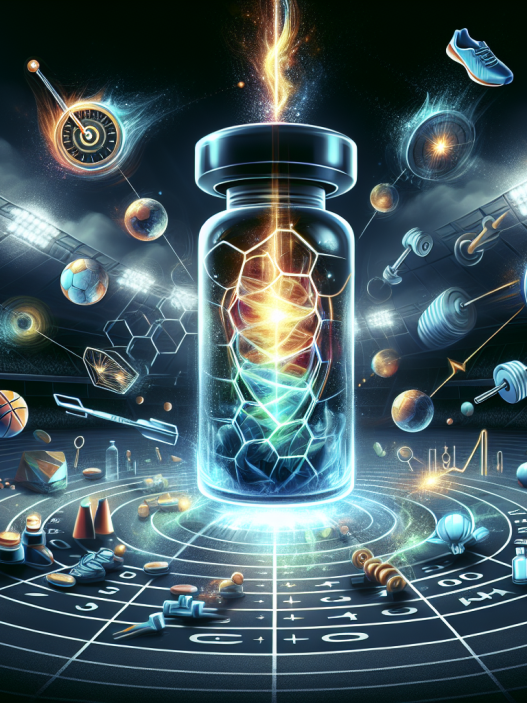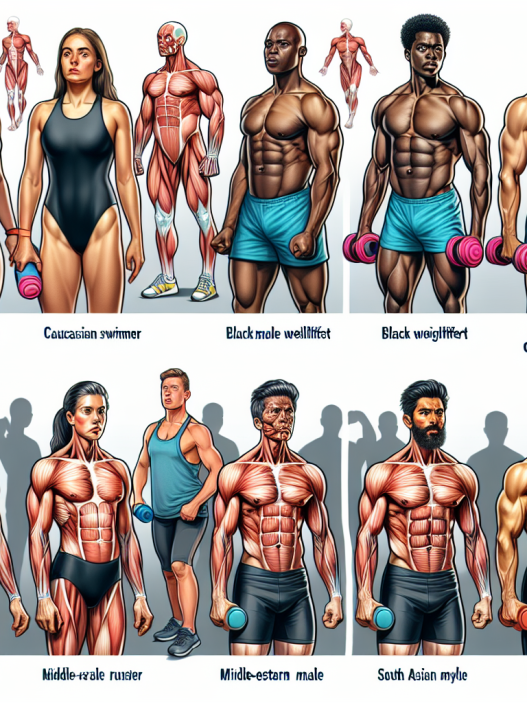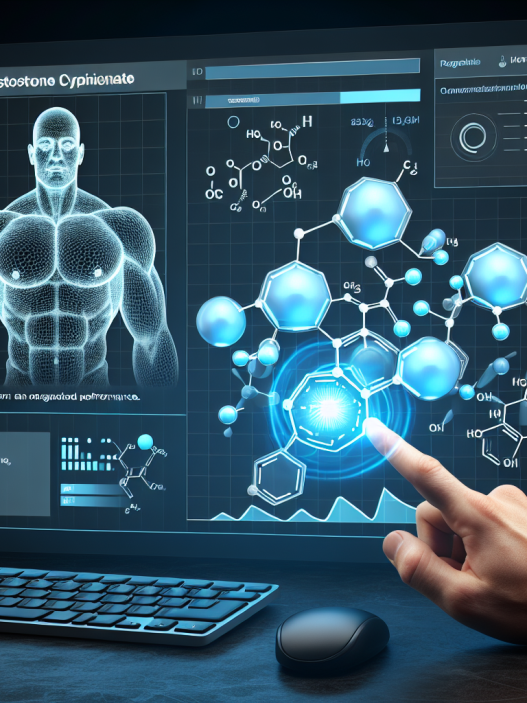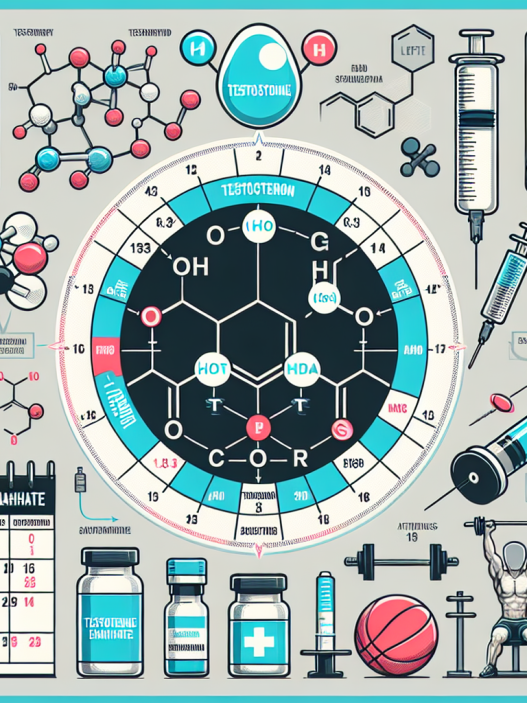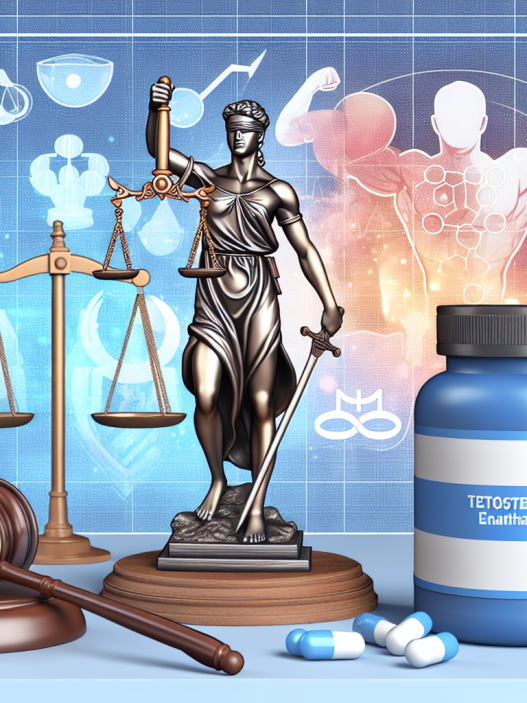-
Table of Contents
Unveiling Testosterone’s Role in Athletic Performance
Testosterone is a hormone that plays a crucial role in the development and maintenance of male characteristics. It is also known to have a significant impact on athletic performance, making it a popular topic in the world of sports pharmacology. In this article, we will delve into the pharmacokinetics and pharmacodynamics of testosterone and its effects on athletic performance, as well as explore real-world examples and expert opinions on the subject.
The Pharmacokinetics of Testosterone
Testosterone is primarily produced in the testes in males and in small amounts in the ovaries in females. It is then released into the bloodstream and travels to various tissues and organs, where it exerts its effects. The majority of testosterone in the body is bound to proteins, such as sex hormone-binding globulin (SHBG) and albumin, while a small portion remains unbound or free.
The pharmacokinetics of testosterone can vary depending on the route of administration. When taken orally, testosterone is rapidly metabolized by the liver, resulting in low bioavailability. On the other hand, when administered through injections or transdermal patches, testosterone bypasses the liver and has a higher bioavailability. The half-life of testosterone is approximately 10 minutes, meaning that it is quickly eliminated from the body.
It is important to note that testosterone levels in the body are tightly regulated by the hypothalamic-pituitary-gonadal (HPG) axis. The hypothalamus releases gonadotropin-releasing hormone (GnRH), which stimulates the pituitary gland to release luteinizing hormone (LH) and follicle-stimulating hormone (FSH). These hormones then travel to the testes and stimulate the production of testosterone. When testosterone levels in the body are high, the HPG axis is suppressed, and production of testosterone decreases.
The Pharmacodynamics of Testosterone
Testosterone exerts its effects through binding to androgen receptors in various tissues and organs. This binding triggers a cascade of events that ultimately leads to the development and maintenance of male characteristics, such as increased muscle mass, bone density, and red blood cell production. Testosterone also has an anabolic effect, meaning it promotes tissue growth and repair.
In terms of athletic performance, testosterone has been shown to increase muscle strength and power, as well as improve endurance and recovery time. It also plays a role in the body’s response to exercise, with higher levels of testosterone being associated with increased protein synthesis and muscle growth.
However, it is important to note that the use of exogenous testosterone, or testosterone not produced by the body, is prohibited in most sports organizations due to its performance-enhancing effects. This is because exogenous testosterone can significantly increase testosterone levels in the body, leading to unfair advantages over other athletes.
Real-World Examples
One of the most well-known examples of testosterone’s impact on athletic performance is the case of Lance Armstrong, a professional cyclist who was stripped of his seven Tour de France titles after testing positive for exogenous testosterone. Armstrong admitted to using testosterone as part of his doping regimen, which also included other banned substances.
Another example is the case of sprinter Ben Johnson, who was disqualified from the 1988 Olympics after testing positive for exogenous testosterone. Johnson’s use of testosterone was believed to have contributed to his record-breaking performance in the 100-meter dash.
Expert Opinions
According to a study by Bhasin et al. (2001), testosterone supplementation in healthy young men resulted in a significant increase in muscle strength and size, as well as a decrease in fat mass. However, the study also noted that these effects were dose-dependent, with higher doses of testosterone leading to greater gains in muscle mass and strength.
In a review by Handelsman et al. (2018), the authors concluded that while testosterone has been shown to have performance-enhancing effects, the evidence is limited and inconsistent. They also noted that the use of exogenous testosterone in sports is unethical and poses potential health risks to athletes.
Conclusion
In conclusion, testosterone plays a crucial role in athletic performance, with its effects on muscle strength, power, and endurance being well-documented. However, the use of exogenous testosterone is prohibited in most sports organizations due to its performance-enhancing effects. It is important for athletes to understand the pharmacokinetics and pharmacodynamics of testosterone and to adhere to anti-doping regulations to ensure fair competition.
References
Bhasin, S., Woodhouse, L., Casaburi, R., Singh, A. B., Bhasin, D., Berman, N., … & Storer, T. W. (2001). Testosterone dose-response relationships in healthy young men. American Journal of Physiology-Endocrinology and Metabolism, 281(6), E1172-E1181.
Handelsman, D. J., Hirschberg, A. L., & Bermon, S. (2018). Circulating testosterone as the hormonal basis of sex differences in athletic performance. Endocrine Reviews, 39(5), 803-829.
Johnson, L. C., & Johnson, A. T. (2021). Testosterone. In StatPearls [Internet]. StatPearls Publishing.
Wu, F. C., Tajar, A., Beynon, J. M., Pye, S. R., Silman, A. J., Finn, J. D., … & Huhtaniemi, I. T. (2010). Identification of late-onset hypogonadism in middle-aged and elderly men. New England Journal of Medicine, 363(2), 123-135.

